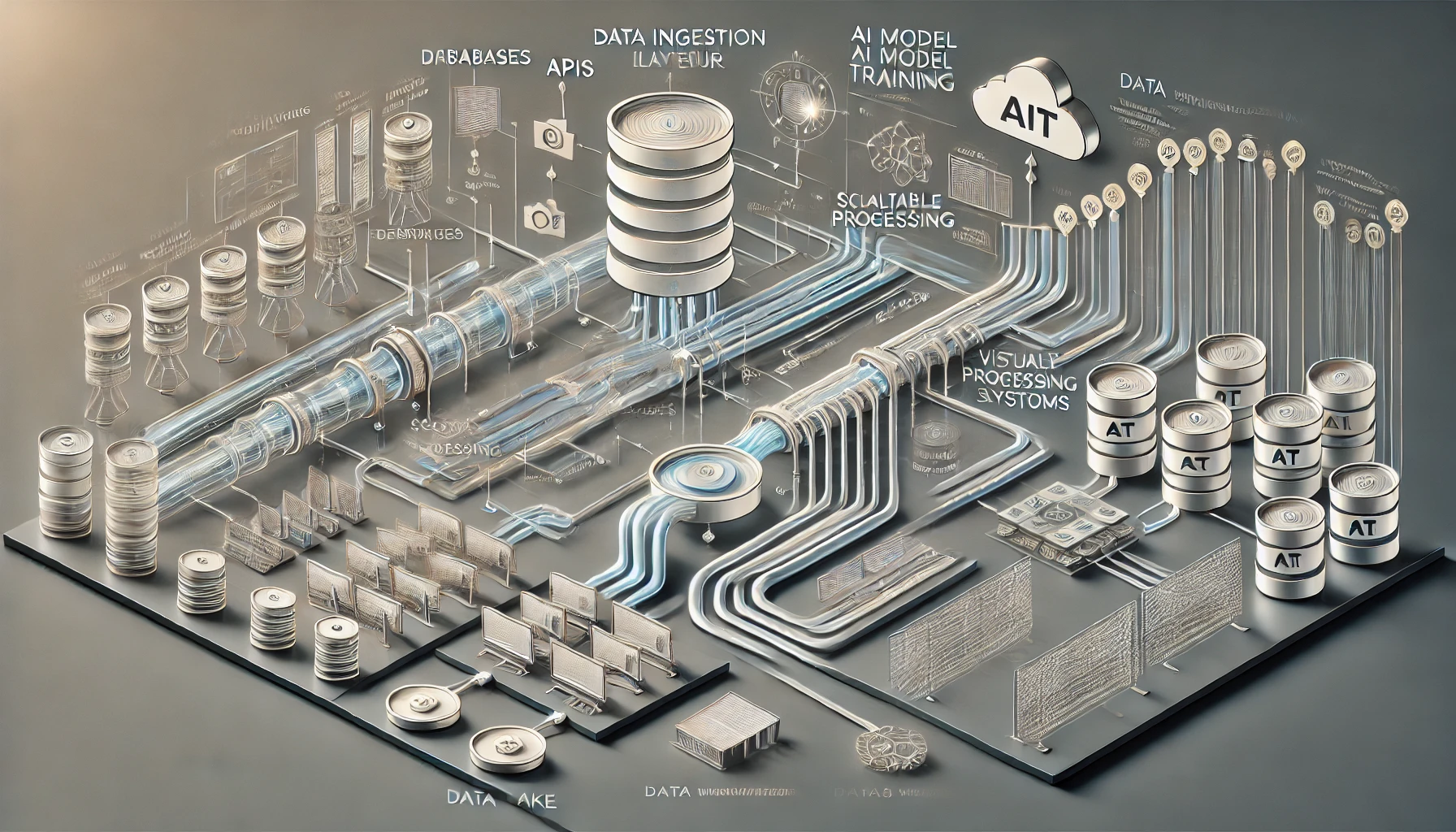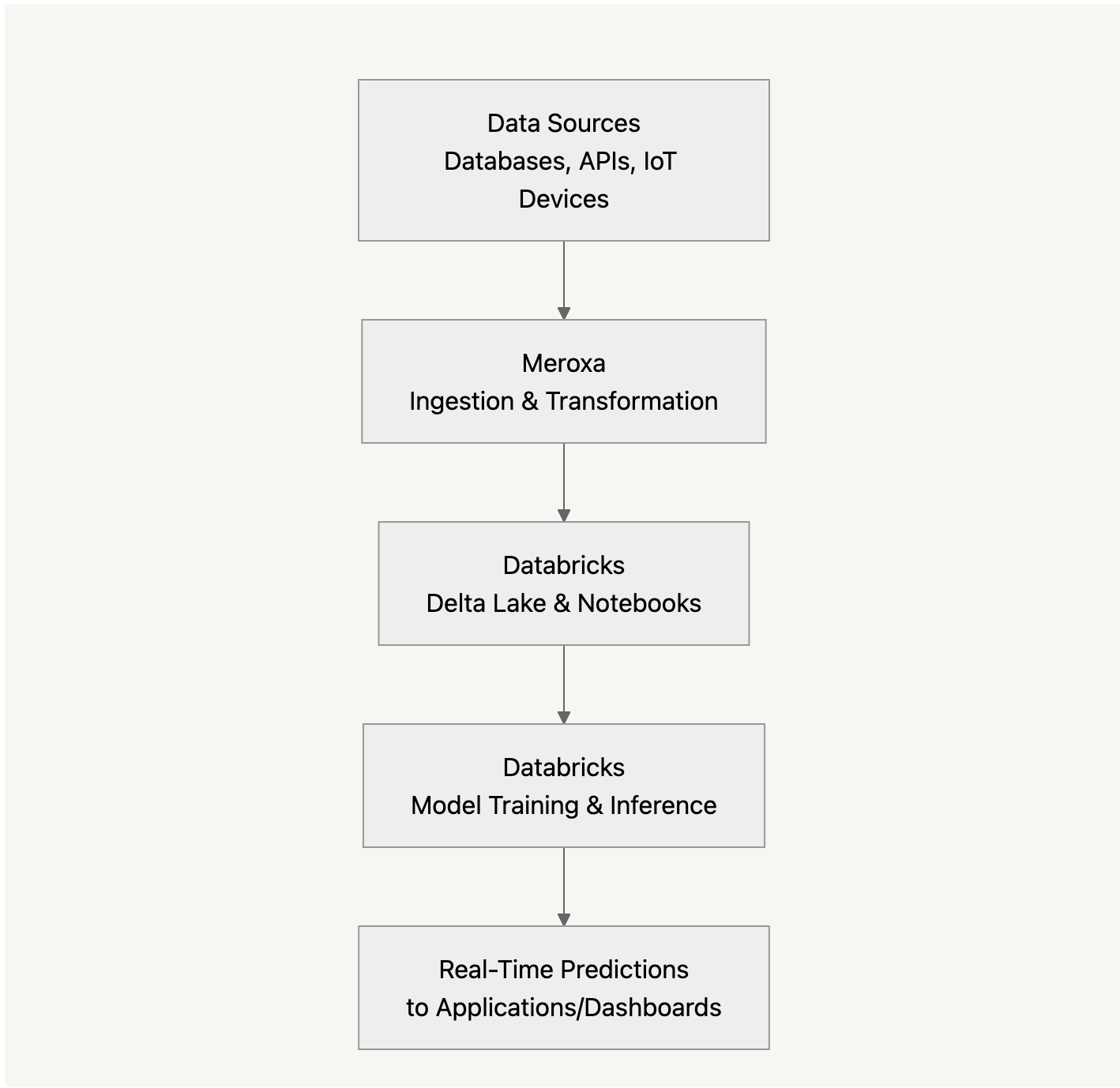
In today’s fast-paced world, businesses are demanding faster and smarter insights from their data. Whether you’re building recommendation engines, real-time fraud detection systems, or dynamic pricing models, timely data can make the difference between staying ahead of the competition or falling behind.
If you’re an existing Databricks user, you already know how powerful its platform can be for large-scale data processing, advanced analytics, and AI model training. But what if you could complement Databricks with an easy-to-use, cost-effective solution for real-time data ingestion and transformation? That’s where Meroxa comes in. Together, Meroxa and Databricks empower you to harness the power of real-time AI workflows—without the complexity and costs that usually come with streaming data.
The Power of Real-Time AI
AI models are only as good as the data they’re trained on. Historically, many organizations relied on batch pipelines that ran daily or weekly, which meant that AI models were working off stale data. With real-time data, you can continuously feed the most up-to-date information into your AI pipelines—leading to more accurate predictions, faster responses to changing market conditions, and overall improved business outcomes.
However, implementing real-time streaming can be challenging. It often requires specialized infrastructure to collect, process, and deliver streaming data at scale. That’s why we built Meroxa to abstract away that complexity. Our platform seamlessly integrates with Databricks so you can transform your streaming data into insights—at a fraction of the complexity and cost.
How Meroxa and Databricks Work Together
Meroxa is designed to handle data ingestion and transformation in real-time. Databricks excels at large-scale data processing, model building, and inference. Here’s a high-level look at how data flows between the two:

- Data Ingestion: Meroxa connects to various data sources—ranging from databases and APIs to IoT devices—to ingest streaming data.
- Data Transformation: Meroxa processes and enriches the data in-flight, ensuring it’s clean, well-structured, and ready for analysis.
- Data Lake: The transformed data is delivered to Databricks (Delta Lake), where it can be immediately leveraged for analytics or AI workflows.
- Model Building and Inference: Using Databricks’ powerful notebooks and Spark-based infrastructure, data scientists train and deploy AI models.
- Real-Time Predictions: The resulting insights or predictions can be pushed back into downstream applications, dashboards, or other systems for immediate action.
Pros and Cons of Real-Time Streaming with Databricks
Customer Value
- Pros: Real-time data enables immediate insights, allowing you to enhance customer experiences, reduce fraud, or refine recommendations on the fly.
- Cons: A real-time approach requires more diligence around data quality and governance to ensure accurate results.
Performance
- Pros: Databricks, with its scalable compute engine, can handle massive throughput, making it suitable for high-velocity data streams.
- Cons: If not configured properly, streaming workloads can become resource-intensive.
Complexity
- Pros: Databricks notebooks provide a familiar environment for data engineers and data scientists. Meroxa’s automation reduces the complexity of managing multiple real-time data pipelines.
- Cons: Setting up and managing a streaming architecture from scratch is traditionally complex. However, Meroxa alleviates much of that burden by providing managed, easy-to-configure connectors and transformations.
Compute Cost
- Pros: Streaming can lower the cost of data processing by reducing reliance on batch windows and large, one-time compute spikes.
- Cons: Always-on streaming clusters can drive up compute costs if not carefully orchestrated. By offloading real-time ingestion and transformations to Meroxa, you only pay for what you use, helping manage costs more effectively.
Meroxa: Real-Time AI Without the Headaches
Implementing real-time data streams shouldn’t be overwhelming—or expensive. Meroxa’s fully-managed platform abstracts away much of the complexity involved in ingesting, processing, and routing streaming data. Our ready-to-use connectors, real-time transformations, and intuitive UI make it easy to onboard new data sources and pipelines—no need to spin up additional infrastructure or juggle multiple services.
Meanwhile, Databricks handles what it does best: large-scale data processing, advanced analytics, and AI model development. Together, Meroxa and Databricks form a powerful combination that yields more accurate AI models, quicker time-to-insight, and significantly lower operational overhead.
Call to Action
Ready to unlock the potential of real-time AI? Start by using Meroxa for your data ingestion and transformation needs. Then, harness the power of Databricks for model building and inference. With Meroxa taking care of real-time data and Databricks focusing on advanced analytics and AI, you can drive powerful new insights—faster and more affordably than ever.
Get started today and see how Meroxa + Databricks can help you streamline your data pipelines, reduce operational complexity, and take your AI initiatives to the next level.
